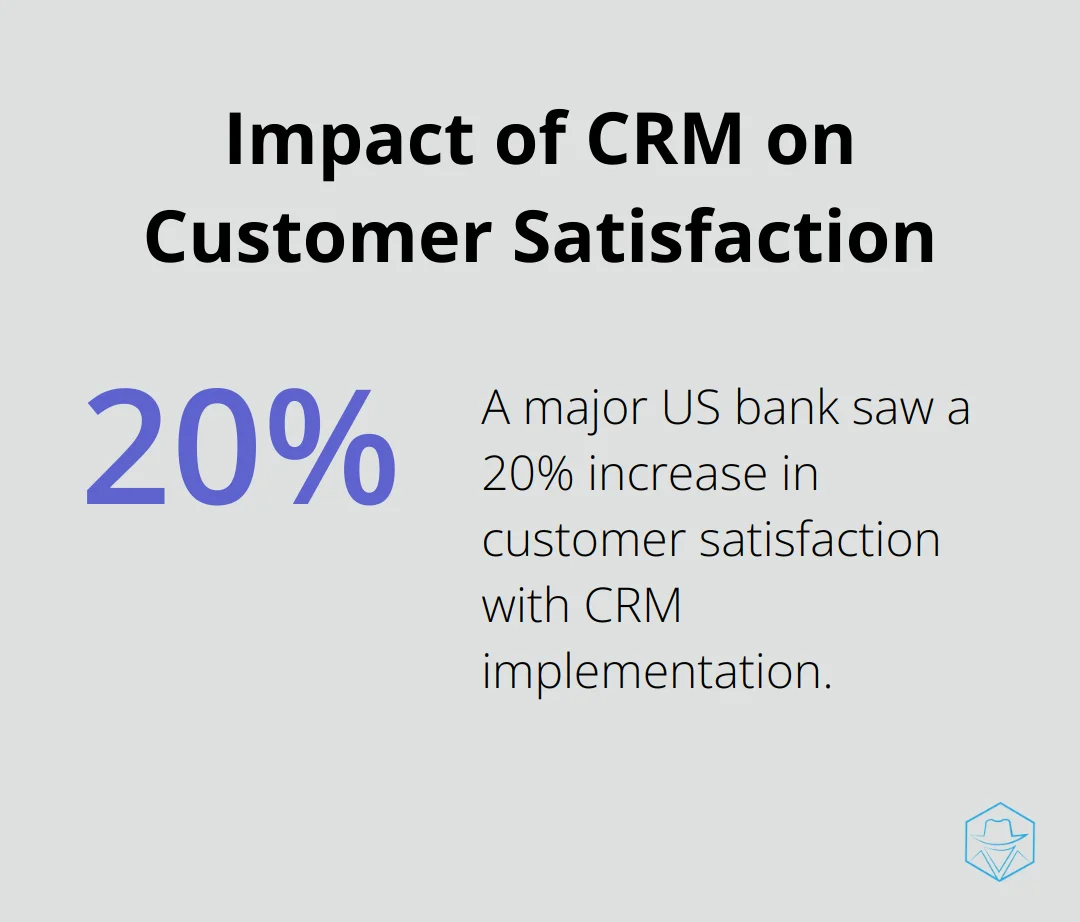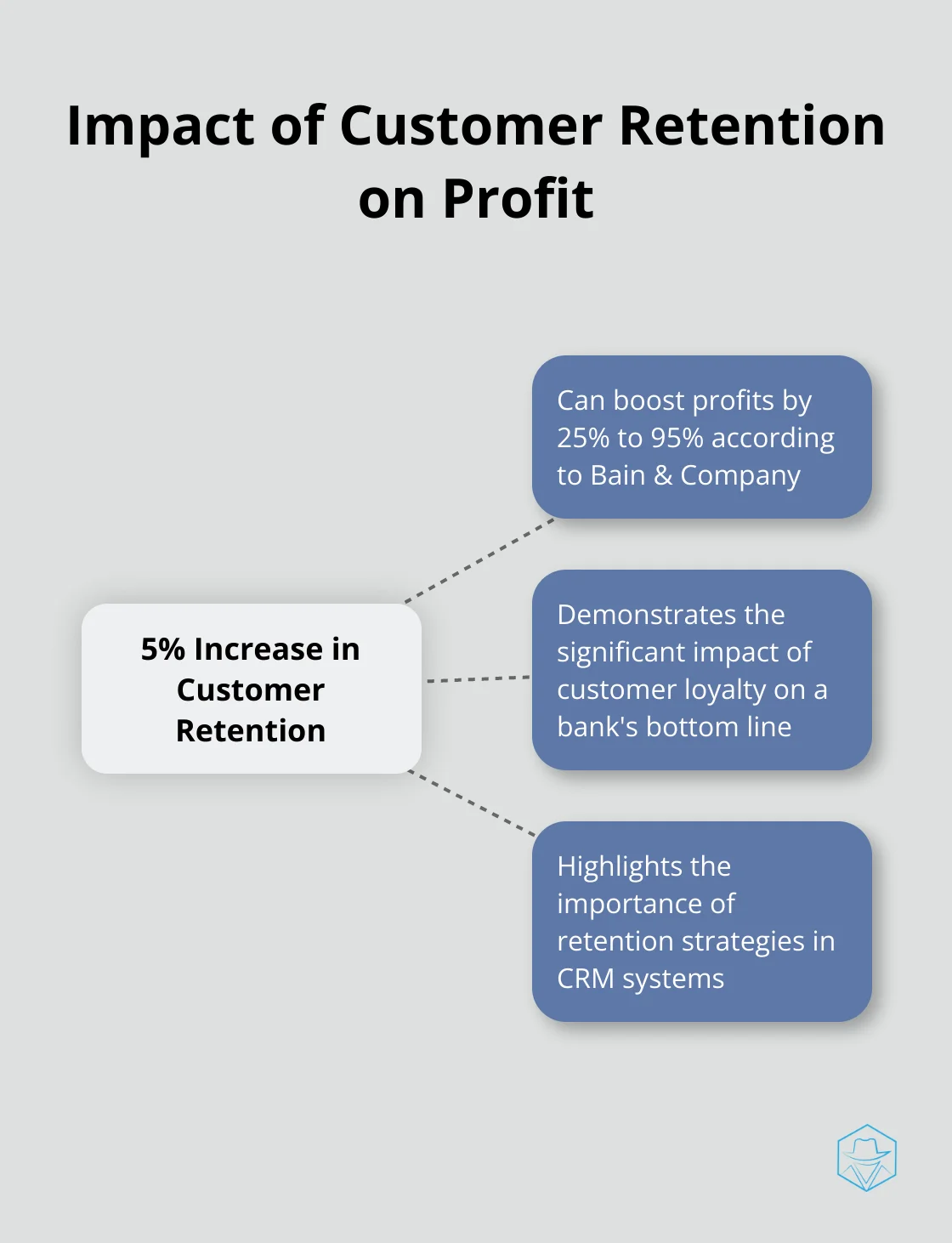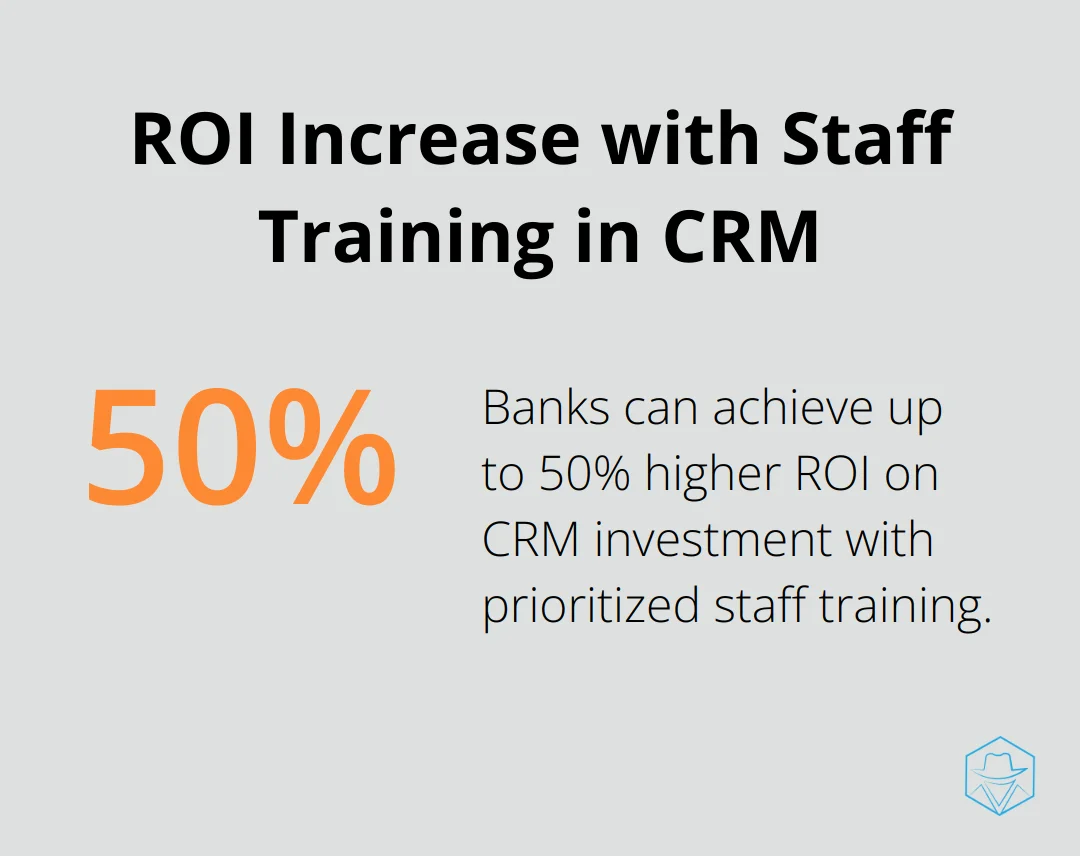Bank CRM Systems: Enhance Customer Relationships

Bank CRM systems are revolutionizing how financial institutions interact with their customers. These powerful tools enable banks to manage relationships, analyze data, and provide personalized services more effectively than ever before.
At Drop Cowboy, we’ve seen firsthand how the right CRM can transform a bank’s operations and customer experience. In this post, we’ll explore the key features, benefits, and best practices for implementing CRM systems in the banking sector.
What Makes Bank CRM Systems Powerful?
Comprehensive Customer Insights
Bank CRM systems form the backbone of modern customer relationship management in the financial sector. These systems offer a suite of features that empower banks to deliver exceptional customer experiences and drive business growth.
At the core of any effective bank CRM lies its ability to manage and analyze customer data. A 360-degree view of each customer proves invaluable for financial institutions. Bank CRMs consolidate data from various touchpoints, creating a unified profile for each client. This includes transaction history, product preferences, and interaction logs. With this wealth of information at their disposal, bank employees can make informed decisions and provide tailored services.
A major US bank reported a 20% increase in customer satisfaction after implementing a CRM system that provided real-time customer insights to their front-line staff. This improvement directly resulted from the staff’s ability to anticipate customer needs and offer relevant solutions promptly.

Seamless Multichannel Communication
Today’s customers expect to interact with their bank through various channels – in-branch, online, mobile, or social media. A robust bank CRM system integrates these channels, ensuring a consistent experience across all touchpoints. This omnichannel approach allows banks to engage with customers on their preferred platforms while maintaining a coherent conversation history.
A study by Deloitte found that banks offering true omnichannel experiences saw a 10% increase in customer retention rates compared to those with siloed communication channels. This highlights the critical role of integrated communication in fostering customer loyalty.
Automation for Efficiency and Personalization
Automation transforms bank CRM systems. It streamlines marketing and sales processes, allowing staff to focus on high-value interactions. Automated workflows can trigger personalized communications based on customer behavior or life events. For example, a customer reaching a certain savings milestone could automatically receive information about investment products.
Moreover, AI-driven product recommendations have become a staple of advanced bank CRMs. These systems analyze customer data to suggest relevant financial products at the right time. A European bank implementing such a system saw a 15% uptick in cross-selling success rates within the first quarter of deployment.
Data Security and Compliance
In the banking sector, data security and regulatory compliance are paramount. Modern bank CRM systems incorporate robust security features to protect sensitive customer information. They also include tools to help banks adhere to regulations such as GDPR, CCPA, and industry-specific requirements.
These powerful features transform customer relationships, boost operational efficiency, and keep banks competitive in the financial landscape. But how can banks maximize the benefits of these systems? Let’s explore the advantages of implementing CRM in banking in the next section.
Why CRM Transforms Banking
Elevating Customer Satisfaction
CRM systems enable banks to deliver personalized experiences that customers desire. A study by Accenture revealed that 91% of consumers prefer to shop with brands offering relevant recommendations. For banks, this translates to increased satisfaction and loyalty.
A regional bank in the US experienced a 15-point increase in its Net Promoter Score (NPS) within six months of CRM implementation. The bank achieved this through tailored product recommendations and proactive service based on customer data analysis.
Maximizing Revenue Potential
CRM insights make cross-selling and upselling significantly more effective. Banks can identify the right products for each customer at the optimal moment. A major European bank reported a 22% increase in product sales per customer after implementing a CRM-driven recommendation engine.
CRM systems also help banks retain their most valuable customers. According to Bain & Company, a mere 5% increase in customer retention rates can boost profits by 25% to 95%. CRM tools identify at-risk customers, allowing banks to intervene with retention strategies proactively.

Enhancing Operational Efficiency
CRM systems streamline processes, reducing time and resources needed for routine tasks. A mid-sized bank in Asia reported a 30% reduction in customer onboarding time after implementing a CRM system with automated workflows.
CRM analytics provide actionable insights for strategic decision-making. Banks can optimize their product offerings, branch locations, and marketing campaigns based on data-driven insights. This level of efficiency doesn’t just save costs-it allows banks to allocate resources where they matter most.
Simplifying Regulatory Compliance
In an era of increasing regulatory scrutiny, CRM systems prove invaluable for compliance. They provide a centralized repository for customer interactions, simplifying the demonstration of compliance with regulations like Know Your Customer (KYC) and Anti-Money Laundering (AML).
A large US bank reduced its compliance-related costs by 18% after implementing a CRM system with built-in regulatory features. The system automated many compliance checks, reducing human error and freeing up staff to focus on more complex compliance issues.
As we move forward, it’s clear that CRM systems are not just tools, but catalysts for transformation in banking. They enhance customer relationships, boost revenue, streamline operations, and strengthen compliance. But how can banks effectively implement these powerful systems? Let’s explore the best practices for bank CRM implementation in the next section.
How to Implement Bank CRM Successfully
Define Clear Objectives and KPIs
Banks must establish specific goals and key performance indicators (KPIs) for their CRM system before implementation. A large US bank set targets to increase customer retention by 10% and improve cross-selling rates by 15% within the first year of CRM implementation. These precise objectives guided their entire process and helped measure success.
Your strategy should align with your bank’s overall business objectives. You might aim to enhance customer service, boost sales, or streamline operations. Each goal will require different CRM features and implementation approaches.
Ensure Data Quality and Integration
The effectiveness of your CRM system depends on the quality and integration of your data. A European bank dedicated three months to clean and standardize their customer data before CRM implementation. This upfront investment resulted in a 25% reduction in data-related errors and a 30% improvement in customer profiling accuracy.
Integrate your CRM with existing systems (e.g., core banking platforms, loan origination systems, and customer service tools). This integration ensures a seamless flow of information and prevents data silos. A mid-sized bank in Asia experienced a 40% increase in operational efficiency after fully integrating their CRM with their core banking system.
Provide Comprehensive Staff Training
The most sophisticated CRM system only performs as well as the people who use it. Banks achieve up to 50% higher ROI on their CRM investment when they prioritize staff training. A regional bank in the US implemented a multi-tiered training program, which included e-learning modules, hands-on workshops, and ongoing support. This approach led to a 95% user adoption rate within six months of implementation.

Training should extend beyond teaching staff how to use the system. It should also cover how to leverage CRM insights for better customer interactions and decision-making. Try to create a team of CRM champions who can provide ongoing support and encourage best practices across the organization.
Optimize and Update Continuously
CRM implementation requires ongoing attention and refinement. Banks that regularly update and optimize their CRM systems consistently see better results. A major European bank established a quarterly review process for their CRM system. This approach allowed them to address user feedback quickly, adapt to changing market conditions, and incorporate new features. As a result, they saw a year-over-year improvement in CRM-driven sales, with the latest figures showing a 28% increase.
Stay informed about new CRM features and industry trends. Many banks now explore AI and machine learning capabilities in their CRM systems to enhance predictive analytics and personalization. However, always evaluate new features based on their alignment with your bank’s specific needs and objectives.
Final Thoughts
Bank CRM systems have become essential tools for financial institutions in today’s competitive landscape. These platforms enable banks to build stronger customer relationships, improve operational efficiency, and increase revenue growth. By centralizing data, automating processes, and providing actionable insights, CRM systems help banks deliver personalized experiences that meet modern consumer expectations.
The future of bank CRM systems will incorporate advanced technologies such as artificial intelligence and machine learning. These innovations will enhance predictive analytics capabilities, allowing banks to anticipate customer needs with greater accuracy. Banks that adopt or upgrade their CRM systems will position themselves to navigate the changing financial landscape and drive sustainable growth.
At Drop Cowboy, we recognize the power of advanced communication technologies in enhancing customer engagement. Our platform focuses on ringless voicemail and SMS marketing, which complements bank CRM systems in creating more personalized, effective customer interactions. As banks continue to prioritize customer-centric strategies, CRM systems will play an increasingly important role in meeting and exceeding customer expectations.
blog-dropcowboy-com
Related posts

June 10, 2025
Affinity CRM Pricing: Is It Worth the Investment?
Explore Affinity CRM pricing and determine if it delivers value for your business with our detailed cost-benefit analysis and practical tips.

June 23, 2025
How to Access Voicemail on Boost Mobile App
Access Boost Mobile Voicemail App seamlessly. Follow our easy steps for quick set-up and enjoy instant control over your messages.

May 27, 2025
How to Access and Analyze GoDaddy Logs
Explore how to access and analyze GoDaddy logs for insights. Learn practical steps and tools for efficient log management. Enhance your site performance!

March 18, 2025
Top Twilio Competitors in the Communications API Market
Explore top Twilio competitors in the communications API market. Compare features and find the best alternatives to enhance your communication strategy.

May 15, 2025
Top YouMail Alternatives for Better Call Management
Explore YouMail alternatives for enhanced call management; discover tools that improve productivity and communication without missing important calls.

May 6, 2025
ActiveCampaign vs HubSpot: Marketing Automation Battle
Compare ActiveCampaign vs HubSpot to find the best marketing automation platform. Explore features, pricing, and user experiences in our analysis.